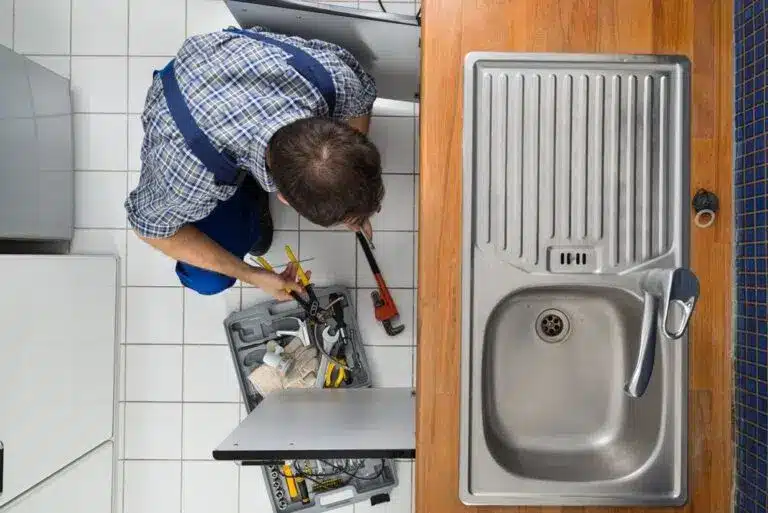This post below about Tips on Fixing a Leaking Garbage Disposal is relatively insightful. Have a go and draw your own personal conclusions.

Waste disposal unit are important kitchen area appliances that aid in taking care of food waste efficiently. Nevertheless, a leaking garbage disposal can be an aggravating and untidy trouble to manage. Fortunately, many leaks can be taken care of quickly with a few simple actions. In this post, we will discuss just how to deal with a dripping garbage disposal properly.
Intro
Waste disposal unit are set up under cooking area sinks and are created to shred food waste into smaller sized pieces, permitting it to travel through the plumbing system conveniently. While these tools are generally reputable, leaks can happen with time as a result of damage, loose connections, or damage to the unit.
Usual Sources Of Leaks in Rubbish Disposals
Worn Seals and Gaskets
Seals and gaskets play an important function in stopping water from dripping out of the garbage disposal. In time, these elements can degrade, bring about leaks around the disposal device.
Loose Links
The connections between the waste disposal unit and the pipes system can come to be loose with time, triggering water to leakage out during procedure.
Splits or Holes in the Disposal Unit
Physical damages to the garbage disposal, such as fractures or openings in the real estate, can additionally result in leaks.
Identifying the Source of the Leakage
Before attempting to fix a leaking garbage disposal, it is vital to recognize the resource of the leakage. This can usually be done through aesthetic inspection or by carrying out straightforward examinations.
Visual Evaluation
Evaluate the garbage disposal system meticulously for any kind of indications of water leakage. Pay very close attention to areas around seals, gaskets, and link points.
Evaluating for Leaks
One way to test for leakages is by running water through the disposal device and checking for any type of visible indicators of leakage.
Tools and Products Needed for Dealing With a Dripping Garbage Disposal
Prior to beginning the repair service procedure, collect the required devices and products, consisting of a screwdriver, flexible wrench, plumbing's putty, substitute seals or gaskets, and epoxy or patching product for fixing fractures or holes.
Step-by-Step Guide to Taking Care Of a Dripping Garbage Disposal
Shut off the Power
Prior to attempting any type of repairs, make sure that the power to the waste disposal unit system is shut off to avoid the risk of electric shock.
Situate the Leakage
Recognize the specific place of the leak and determine the cause.
Tighten up Connections
Use a wrench to tighten any kind of loose links between the disposal device and the plumbing system.
Replace Seals or Gaskets
If the leak is due to worn seals or gaskets, remove the old parts and replace them with brand-new ones.
Patching Fractures or Openings
For splits or holes in the disposal device, use epoxy or an ideal patching material to secure the damaged location.
Examining the Waste Disposal Unit After Repair
As soon as the repair service is total, examine the waste disposal unit by running water via it to guarantee that the leakage has been settled.
Preventive Upkeep Tips to Prevent Future Leakages
To prevent future leakages, it is important to execute normal maintenance on your garbage disposal. This consists of keeping it tidy, preventing putting non-food products or hard items down the disposal, and periodically looking for leaks or other problems.
Verdict
In conclusion, fixing a dripping garbage disposal is a fairly simple procedure that can be finished with basic tools and products. By adhering to the steps described in this article and practicing preventive maintenance, you can maintain your waste disposal unit in good working problem and avoid pricey fixings in the future.
What to Do About a Leaking Garbage Disposal
A leaking garbage disposal often goes unnoticed until you confront a sopping cabinet, a foul-smelling puddle, or an audible drip-drip-drip from the unit. The fix can be frustrating, too, because the leak can stem from a number of components in the system. Fortunately, with a little sleuthing, you can zero in on the leak and—depending on the exact location—stop the icky oozing and repair the component that caused it. Worst case scenario, if it turns out that the garbage disposal must be replaced, installing a new one is a reasonable do-it-yourself task for those with basic plumbing skills. Read on to keep the cash you’d otherwise hand over to a pro.
Prepare to find the leak
Prior to testing the garbage disposal for leaks, unplug it at the wall outlet and turn off the power from the breaker box to prevent electrical shock. Then insert a watertight sink stopper into your sink drain and wipe the unit dry with a clean cloth. In any handy container, mix a few drops of food coloring into a few cups of water, and pour the dyed water onto the sink stopper to help you locate the leak.
Investigate the source
the top, where the disposal meets the sink drain the side, where the dishwasher hose or main drain pipe connects to the disposal or the bottom of the unit Inspect each of these locations while gliding a light-colored rag over the unit; the dyed water will readily show on the rag and reveal the location of the leak. If a leak isn’t immediately apparent, remove the sink stopper and pour a few more cups of dyed water down the sink drain, then check for leaks again. Leaks near the top of the unit are more likely to show themselves while the sink is plugged, while side and bottom leaks are more noticeable while the sink is unplugged.
The metal sink flange that sits directly inside the sink drain is typically sealed around the top with plumber’s putty (a clay-like sealant) and then secured from under the sink with bolts. If the plumber’s putty deteriorates, or the bolts loosen, the flange can no longer form a watertight seal between the sink drain and the disposal—which could cause a leak at the top of the unit.
To reseal the leaky flange, you must first detach the garbage disposal. Start by loosening the screws securing the main drain pipe to the disposal, then loosen the screws in the metal clamp securing the dishwasher hose to the disposal and detach the drain pipe and dishwasher hose from the disposal. Loosen the screws in the mounting ring that connects the disposal to the metal mounting assembly beneath the sink, then pull down the disposal and carefully set it on a clean, dry surface. Loosen the bolts in the mounting assembly with a wrench, then pull down the mounting assembly and set it near the disposal.

I am very drawn to The Handy Guide To Fixing Your Garbage Disposal Leaking and I hope you appreciated my page. Are you aware of someone else who is excited about the subject? Feel free to promote it. I love reading our article about Tips on Fixing a Leaking Garbage Disposal.
Book Your Installation